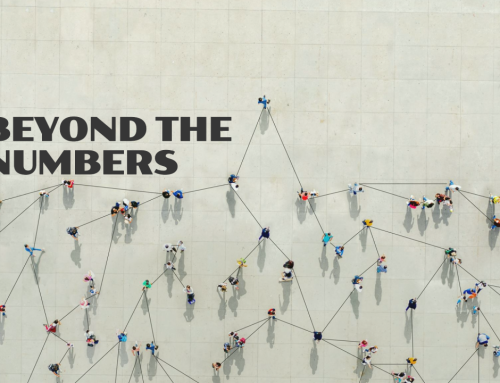Cara Heilmann
Cara is CEO of Ready Reset Go®—career coaching firm helping people get jobs they love.
Tom, a recent job candidate, had no idea how prevalent artificial intelligence (AI) had become until he was deep into his job search. Even though he wondered at times what he could do to get his résumé in front of more live hiring leaders, bots that he had encountered were making the application process faster and surprisingly fun.
It’s great news for employers, as HR experts are constantly looking for new technology to increase productivity and improve the candidate experience. According to a Korn Ferry Global survey, of the nearly 800 HR professionals surveyed, 63% said that AI has already changed the way recruiting is done today. AI streamlines the recruiting process by automating high-volume and often time-consuming tasks, such as candidate sourcing, applicant screening and interview scheduling.
Let’s take a look at a few successful AI implementations and see how job seekers can keep up with evolving technology.
How AI Is Transforming The Recruiting Process
By automating processes such as candidate sourcing, AI can double recruiters’ efforts by scouring the internet for promising candidates while the recruiter focuses on other tasks.
In a recent AI recruiting webinar I attended, participants were introduced to Arya, a sourcing app that uses machine learning to identify the patterns of successful employees and draws potential candidates out of the millions of online profiles by applying this algorithm to a company’s existing résumé database and beyond. Arya adapts and learns based on the performance of new hires by analyzing data like performance reviews, turnover rates and the timing and frequency of promotions. It could significantly reduce the time it takes to identify top candidates.
AI can also save time and engage during the application process with automated assistants or chatbots, apps that simulate human conversations through text boxes or voice commands.
Tom had a fascinating experience with one of his interview “schedulers.” He hit a dead end when he received a broken link to an application form, so he chatted online with a scheduler named “Alex” at 11 p.m. Tom received a reply instantly: “Oh my goodness. I’m sorry about that. Here is a new link for you. Please let me know if it does not work.” Tom was surprised by how human-like the message sounded and, more importantly, was grateful to have the link that same night instead of having to wait for a reply.
YOU MAY ALSO LIKE
All these innovations can help identify and attract great talent.
But while this all sounds like a win for companies, what does it mean for candidates? What can people in today’s job market do to increase their chances of being “discovered” by AI apps and land a great job?
Here are four important tips for current job seekers.
Tip 1: Create an online profile.
Job seekers who shy away from social media will find themselves at a disadvantage. As sourcing apps scan through websites in search of future star employees, candidates who submit their résumés by email — a method that has become increasingly outdated — or rely purely on traditional networking methods may soon see job opportunities dwindling.
There are many professional online resources that offer complimentary user accounts for networking, the largest most well-known online professional network is LinkedIn. About.me is another excellent professional platform. And with current web designer tools, job seekers could create a personal website or blog.
Tip 2: Create another online profile.
A seasoned executive recruiter recently said that LinkedIn is replacing the résumé. Since LinkedIn profiles closely mirror résumés, seasoned professionals could create a second profile that offers a comprehensive overview of the experience.
In the second profile, list credentials, certifications and programming languages that would otherwise clutter your résumé and LinkedIn profile. List expired certifications, particularly if notable and provide a more detailed employment history. As sourcing apps use the employment history of successful hires to create match criteria, you effectively increase your chances of being shortlisted as a top candidate when you make more information available.
Tip 3: Make your contact information public.
Make it easy for AI software and recruiters to locate your email address and contact information. Change your privacy settings so your contact details are visible to all your connections. If you are concerned about sharing private information, sign up for a free Google Voice number that will forward calls to your personal mobile device and create an email address just for the job search. Remember to update mobile numbers or email addresses as they change.
Tip 4: Change the way you approach interviews.
As more and more companies use digital video technology to screen candidates, how something is said is just as important as what is said. There are pre-employment lie-detection tools that could help companies screen candidates during an interview. According to a CNN Tech article titled “The eyes expose our lies. Now AI is noticing,” the cost of one tool that screens candidates’ eyes is $4,000, plus $50 to $150 for each test scored, a negligible cost for most employers.
Gone are the days of embellishing qualifications. If you’re an interviewee, look at interviews as an opportunity to express versus impress.
As the implementation of AI in recruitment becomes increasingly widespread, candidates must change the way they leverage online profiles and tackle the interview process. While the full impact of AI technology remains to be seen, one thing is certain: AI will change how we apply for positions in the future, but honesty will still be the best policy when it comes to landing a job.
Origination Link: https://www.forbes.com/sites/forbescoachescouncil/2018/06/22/artificial-intelligence-and-recruiting-a-candidates-perspective/#3ea2d9ee7a88







Leave A Comment